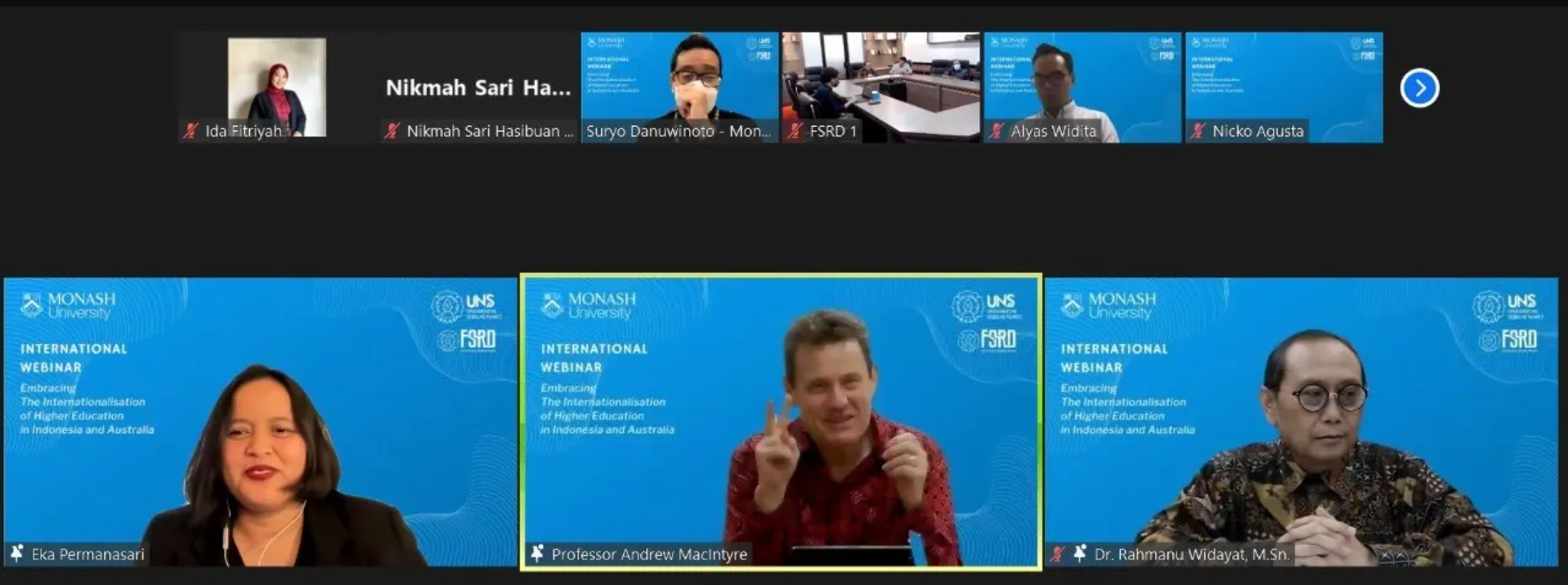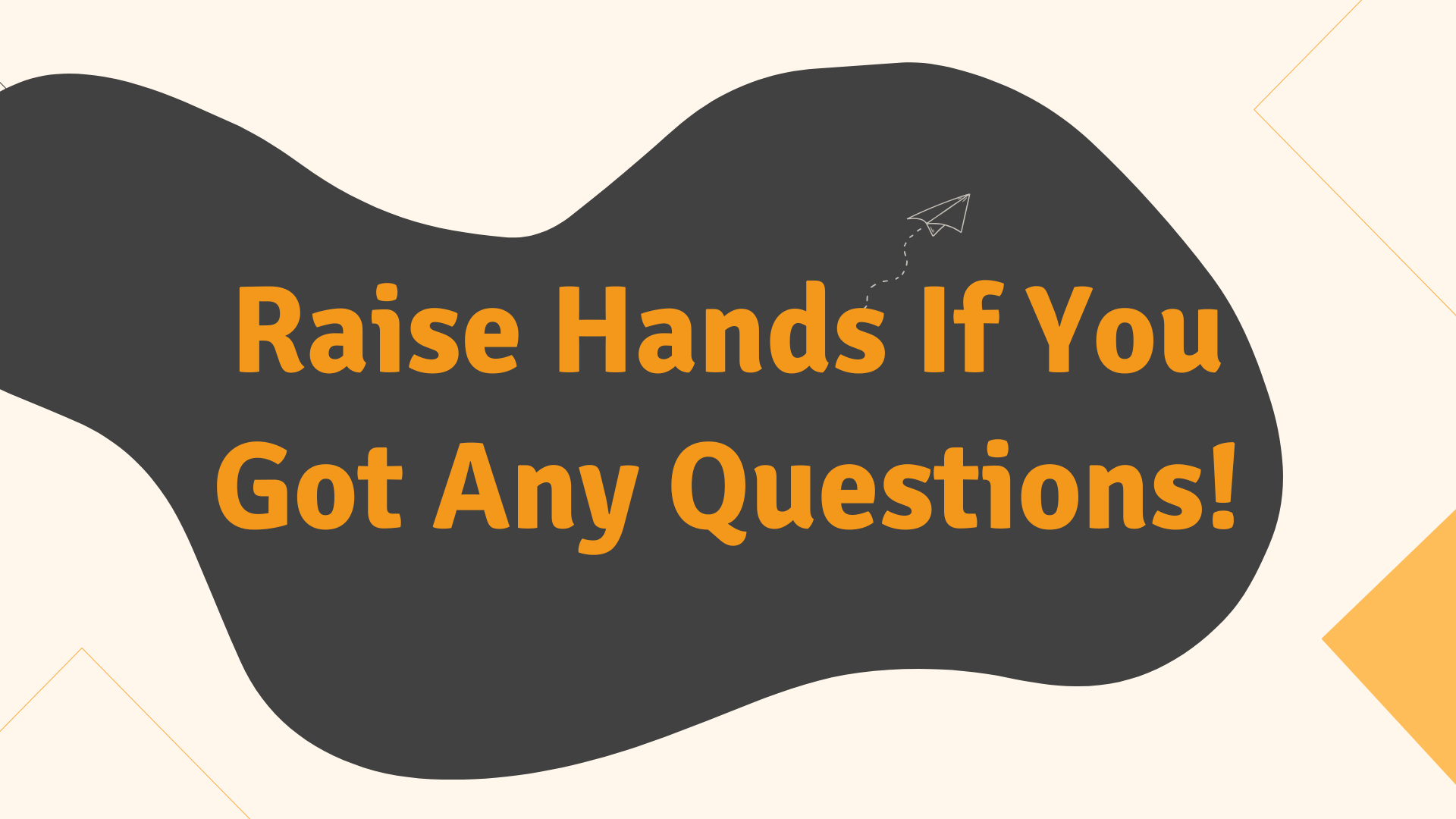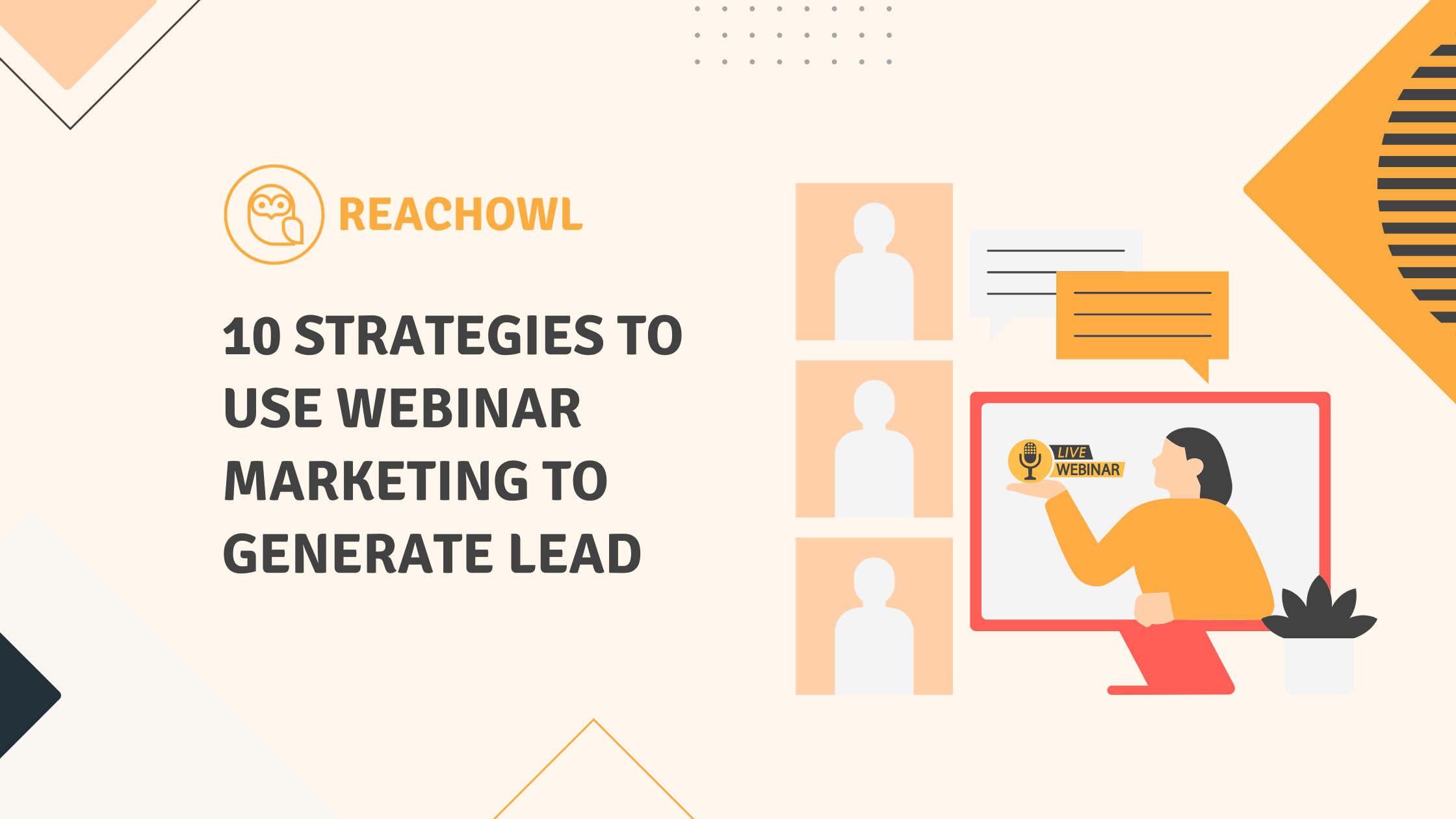Businesses are searching for effective ways to engage with their audience, and in 2025 the growing demand is primarily for virtual event engagement. This is why now businesses are now utilizing webinar marketing, as webinar content not only builds trust but also generates and nurtures leads.
And yes, if you plan for a webinar, the quality of the webinar content should be attracted over frequency for effective all sales-driven leads, as it doesn’t rush in the next second to host a webinar, and for that, marketers need to be proactive in their approach to generating leads in a niche market.
This blog outlines a tap into potential by ten strategies to maximise lead generation through webinars, which will help you attract and convert potential new customers into loyal clients.
Brief Overview of Webinar Marketing
Webinar marketing allows businesses to engage with their audience in real time through live or recorded online presentations. In 2025, over 70% of marketers are using webinars to generate quality leads, making webinar marketing a cornerstone of modern strategies. Marketers need to focus on quality over quantity when hosting webinars for lead generation.
It helps brands to show their expertise, build trust, and provide value to potential clients, all while generating quality leads. By delivering informative content such as product demos or training sessions, webinars encourage direct communication with an audience, leading to better conversions and stronger customer relationships.
Popular Apps for Recording Webinars:
- Zoom
- Microsoft Teams
- GoToWebinar
- App session
- Webex
- Google Meet
These platforms offer recording features, allowing you to save your webinars for later use or repurpose them as evergreen content.
What is The Impact of Webinar Marketing in Generating Leads?
Websites have become the go-to strategy for brands to attract potential clients and engage with them. A well-executed webinar can educate your audience in an online environment by answering questions live and encouraging them to take action, whether that’s signing up for more information, booking a call, or purchasing a product. This is especially useful in B2B marketing, where building relationships is key to success.

The 10 best strategies to generate leads by webinar marketing
Here are 10 simple strategies you can use to turn webinars into a lead-generation powerhouse.
1. Choose the right webinar topic for your right audience
The first step is choosing a topic that resonates with your audience. Research their pain points, needs, and interests. Focus on how your webinar will provide solutions, making it easier to attract the right people for lead generation. A study revealed that 40% of webinar attendees convert into qualified leads when the topic addresses their specific needs.
Maximising Webinar Registration and Engagement
To effectively manage your webinar audience, providing a registration link is crucial. This allows attendees to sign up by entering their details, such as name, email, and contact number.
Once you’ve collected this information, you can enhance audience engagement through strategic reminders. Here’s how:
- Send Confirmation Emails: After registration, send a confirmation email that includes a personalised welcome message, the webinar date and time, and a direct link to join the webinar.
- Reminders: Schedule reminder emails to keep attendees informed as the webinar date approaches. Consider sending a reminder one week before the event, a second reminder one day before, and the final reminder on the day of the webinar.
- Countdown Notifications: Include a countdown in your reminders (e.g., “3 days left until the webinar!”). This creates urgency and encourages participation.
By using these strategies, you can significantly improve attendance rates and ensure your audience stays engaged throughout the process. Additionally, sharing live webinar links on your social media platforms can help attract those who may have missed your initial registration, increasing your reach and engagement.
According to a table displayed by Demand Sage webinar statistics, topics that address specific pain points and needs significantly drive registrations.

2. Build a Registration Landing Page For The Webinar
To create an effective registration landing page for your webinar, start with a compelling headline that highlights the webinar’s value. Include essential details such as the date, time, duration, and key speakers, along with a brief description of what attendees will learn.
Use images or videos to grab the visitor’s attention and provide a prominent button like “Register Now.” Keep the registration form simple, asking for essential details while offering an option for attendees to submit questions in advance. These elements will help you create a high-converting landing page that attracts sign-ups.
Check out resources like Landingi’s 31 Inspiring Examples of Webinar Landing Page for real-world designs that you can use as a template to guide the design process.

3. Collaborate with Industry Influencers or Co-Hosts
Invite guest speakers who are well-known in your industry to increase credibility. Make sure that webinar partner should have thousands of followers and share a relevant audience with your company, as this collaboration can also help you reach a wider audience, as guest speakers often promote the event to their followers, expanding your lead pool. Influencers bring their audience to your webinar, exposing your content to a broader group.
Example:
The Faculty of Art and Design (FSRD) held an international webinar with Monash University Indonesia to improve higher education quality, especially in Indonesia and Australia, and to support the internationalisation of higher education. This collaboration boosted FSRD’s credibility and expanded its reach to a global audience.

4. Promote your webinar by using DM marketing and Email marketing
Before the webinar, start promoting your webinar by using DM marketing and email marketing. With DM marketing, you can reach out to an audience on social media platforms like Facebook, Instagram, or LinkedIn, where you can send invites to your existing followers to register for the webinar and quit follow-up reminders to those who haven’t registered or to encourage those who have to invite others.
Use email marketing to notify your subscribers by sending a formal email invitation in which it includes the per-webinar teasers where you can highlight the webinar’s value proposition, key speakers, and a registration link.
Example:
Here’s an inspiring example from an Asana webinar email: it featured an animated GIF, an engaging subject line, and a CTA to register. This layout is highly effective for grabbing attention and encouraging immediate registration.

5. Offer Exclusive Content During the Webinar
People love getting access to something unique. Offering exclusive content during your webinar can increase attendance and engagement, such as downloadable resources like e-books or templates, offering special discounts for limited time periods or free trials can boost registrations.
Include a live Q&A session for personalized interaction and give attendees early access to new products or events. Attendees will feel like they’re getting special perks, encouraging more people to join the webinar.
Engage with Instagram Commenters!
Set up a message sequence in ReachOwl and connect with your audience.
6. Record 60 Minutes and Repurpose Your Webinar Content
Your webinar should be recorded for around 60 minutes or more than that because a 60-minute webinar is an ideal length. Start your webinar with a storytelling approach to get the audience’s involvement. Create a story that contributes to the value you are about to deliver in the next 60 minutes.
Once recorded, repurpose this content into smaller pieces like blog posts, social media snippets, or email series to keep your audience engaged after the webinar is over. This helps in nurturing leads over time.
Example:
ReachOwl has recorded a 60-minute webinar where Usama Noman and co-host Ronny Hunter discuss strategies for lead generation using Facebook DM automation.
https://www.youtube.com/watch?v=ZyfyjnXsvkk&t=2s
7. Implement Post-Webinar Follow-Ups
Following up with attendees is key. After a webinar, you can send post-webinar follow-up emails, such as thank-you emails to your attendees, share additional resources, offer a free consultation to those who attended, and provide a recording link. This extra effort can turn webinar participants into loyal leads.
Example:

8. Create Short Webinar Clips and Develop a Social Media Presence
After your webinar, use short video clips to tease key points on social media. Create short clips by breaking the recording into short video clips to share on social media platforms, highlighting key moments or insights. This keeps the conversation going and invites people who missed the live event to catch the replay. Social media posts help in keeping your online marketing webinar content fresh and active.
Example:
Alana Zeitchik shared a short clip from her recent webinar with @partnersforprogressiveisrael on Instagram. In it, she highlights a thought-provoking moment on “searching for the other side,” sparking curiosity among viewers. She directs her followers to the link in her bio for the full webinar replay.

9. Use Polls and Surveys During the Webinar
Using polls and surveys during your webinar boosts engagement and provides valuable feedback. Polls keep the audience engaged in real time, while web surveys help tailor content based on participant responses, offering deeper insights for future improvements.
These insights help you better understand your audience’s preferences, helping you to improve future sessions and shape your content strategy. This interactive approach enhances audience participation and understanding.
As you wrap up, engage attendees by inviting questions and addressing them live. You can also run a final poll on their overall experience and ask for feedback via a post-webinar survey. This helps you enhance your future sessions based on direct participant input.

10. Analyze Webinar Metrics to Improve Future Strategies
After every webinar, analyze key metrics such as attendance rate, engagement, and conversion rate. Understanding what worked (and what didn’t) helps you optimize future content, boost audience engagement, and enhance the overall success of future webinars for even better lead generation results.
The Benefits of Lead Generation Webinars
Lead generation webinars are a marketing tool that can significantly enhance your business growth. Here are some key benefits:
1. Targeted Audience Engagement:
Webinars provide a unique opportunity where they allow you to connect with a specific audience to increase the genuine interest in your products or services. You can attract participants by promoting your webinar to a well-defined demographic that is more likely to engage with your content and ultimately convert into high-quality leads.
2. Showcase Expertise:
Hosting a webinar positions your brand as a thought leader in your industry, allowing you to share valuable insights and knowledge that attract potential customers.
3. Real-Time Interaction:
Webinars facilitate direct interaction with participants through Q&A sessions, polls, and chats, creating an engaging experience that fosters relationships.
4. Lead Qualification:
By requiring registration, you gather valuable data about participants, helping you identify and qualify leads based on their interests and engagement levels.
5. Nurturing Relationships:
Following up with attendees through personalized emails and additional resources can nurture relationships, guiding them through the sales funnel.
6. Cost-Effective Marketing:
Webinars are generally less expensive to host than in-person events, allowing you to allocate your budget more efficiently while reaching a wider audience.
Summary
As the digital landscape evolves, webinars will remain an essential tool for fostering genuine connections and driving growth. By choosing the right topic, promoting it effectively, and following up with your audience, you can turn your webinars into a lead-generating machine. Whether you’re focusing on B2B marketing or expanding your online presence, webinars provide a fantastic way to engage and convert your audience.
FAQ
What is the ideal length for a webinar?
A webinar should ideally last around 60 minutes. This duration allows enough time to cover the topic in-depth while keeping attendees engaged.
How can webinars help generate leads?
Webinars connect businesses with targeted audiences, allowing for real-time interaction and engagement. By providing relevant content that addresses attendees’ needs, businesses can turn participants into qualified leads.
How can I promote my webinar?
Use DM marketing, email marketing, and social media platforms to promote your webinar to the right audience.
What tools can I use to host webinars?
Popular platforms for hosting webinars include Zoom, Microsoft Teams, GoToWebinar, Webex, and Google Meet. These tools offer features for live presentations, audience interaction, and recording capabilities.
How can I repurpose webinar content?
After the webinar, you can repurpose the recorded content into blog posts, social media snippets, or email series to extend its reach and keep the audience engaged over time.
What should I offer during the webinar to generate leads?
Offering exclusive content, such as downloadable resources, special discounts, or early access to products, can enhance engagement and encourage attendance. Including a live Q&A session can also foster personal interaction.

